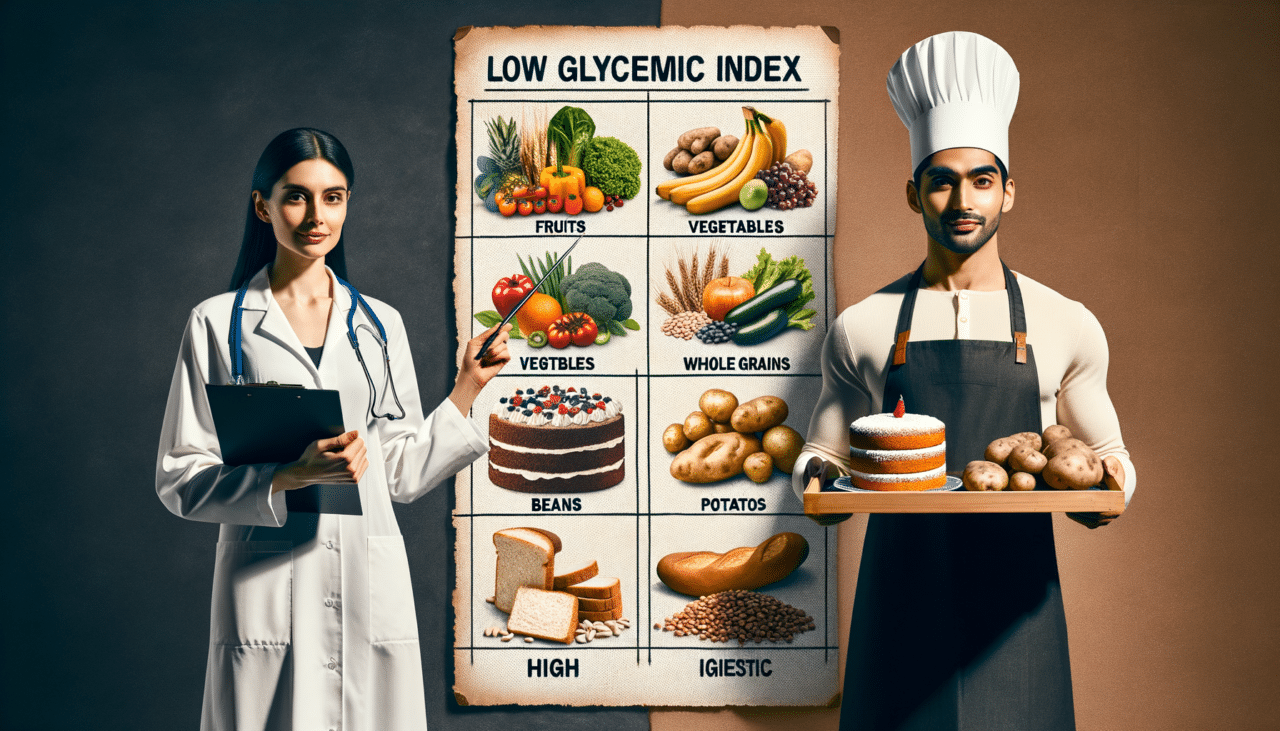In recent years, dietary trends have increasingly focused on the Glycemic Index (GI) as a crucial factor in managing health, weight, and overall well-being. Choosing the right diet based on the GI can significantly impact energy levels, blood sugar control, and even weight management. In this article, we will explore the Low Glycemic Index Diet and the High Glycemic Index Diet, comparing their benefits, drawbacks, and potential impacts on health. Let’s delve into the characteristics of each diet and provide you with a detailed comparison table to help guide your dietary choices.
Characteristics of Low Glycemic Index Diet
A Low Glycemic Index Diet focuses on consuming foods that have a low GI value, typically 55 or less. These foods are digested and absorbed slowly, leading to a gradual rise in blood sugar levels. Here are the key characteristics of a Low GI Diet:
-
Stable Blood Sugar Levels: Foods with a low GI value help maintain consistent blood sugar levels, reducing spikes and crashes, which can be beneficial for individuals with diabetes or insulin resistance.
-
Increased Satiety: Low GI foods often lead to longer-lasting feelings of fullness, which can aid in weight management by reducing the frequency of hunger pangs.
-
Improved Heart Health: A diet rich in low GI foods can contribute to better cholesterol levels and lower the risk of heart disease.
-
Enhanced Energy: The slow release of energy from low GI foods supports sustained energy levels throughout the day, minimizing fatigue.
-
Examples of Low GI Foods: Whole grains (like barley and quinoa), legumes, most fruits and non-starchy vegetables, nuts, and seeds.
Characteristics of High Glycemic Index Diet
A High Glycemic Index Diet includes foods with a GI value of 70 or above. These foods are rapidly digested and absorbed, causing quick spikes in blood sugar levels. Here are the defining characteristics of a High GI Diet:
-
Rapid Energy Boost: High GI foods provide a quick source of energy, which can be beneficial for athletes requiring immediate fuel during intense workouts.
-
Short-Term Satiety: These foods may satisfy hunger quickly but often lead to increased hunger shortly after consumption due to the rapid decline in blood sugar levels.
-
Potential Blood Sugar Spikes: High GI foods can cause significant fluctuations in blood sugar, which may not be suitable for individuals with diabetes or insulin sensitivity.
-
Risk of Overeating: The quick return of hunger may lead to overeating and subsequent weight gain.
-
Examples of High GI Foods: White bread, white rice, pastries, sugary snacks, and certain processed foods.
Comparative Table: Low GI Diet vs. High GI Diet
| Aspect | Low Glycemic Index Diet | High Glycemic Index Diet |
|---|---|---|
| Blood Sugar Control | Helps maintain stable blood sugar levels | Can cause rapid spikes and drops in blood sugar levels |
| Satiety | Increases feelings of fullness, reducing hunger pangs | Provides short-term satiety, often leading to increased hunger |
| Energy Levels | Supports sustained energy throughout the day | Quick energy boost, but may lead to energy crashes |
| Heart Health | May improve heart health by reducing cholesterol | No significant impact on heart health; may increase risk if overconsumed |
| Weight Management | Can aid in weight loss by reducing hunger and overeating | May contribute to weight gain if not balanced with other nutrients |
| Suitable For | Individuals with diabetes, insulin resistance, or those seeking weight management | Athletes needing quick energy, individuals without blood sugar concerns |
| Examples of Foods | Whole grains, legumes, most fruits and vegetables, nuts | White bread, pastries, white rice, sugary snacks |
Conclusion
Choosing between a Low Glycemic Index Diet and a High Glycemic Index Diet ultimately depends on individual health goals, lifestyle, and dietary needs. A Low GI Diet is generally more beneficial for long-term health, providing sustained energy, improved satiety, and better blood sugar control. It is particularly suitable for individuals managing diabetes or seeking to lose weight. On the other hand, a High GI Diet may offer immediate energy, making it appealing for athletes or those needing quick fuel. However, it requires careful management to avoid potential negative impacts on health.
Understanding the differences between these diets can help you make informed dietary choices that align with your health objectives. For personalized advice, consult with a healthcare provider or nutritionist to determine which diet best suits your needs.

Comments (0)
There are no comments here yet, you can be the first!